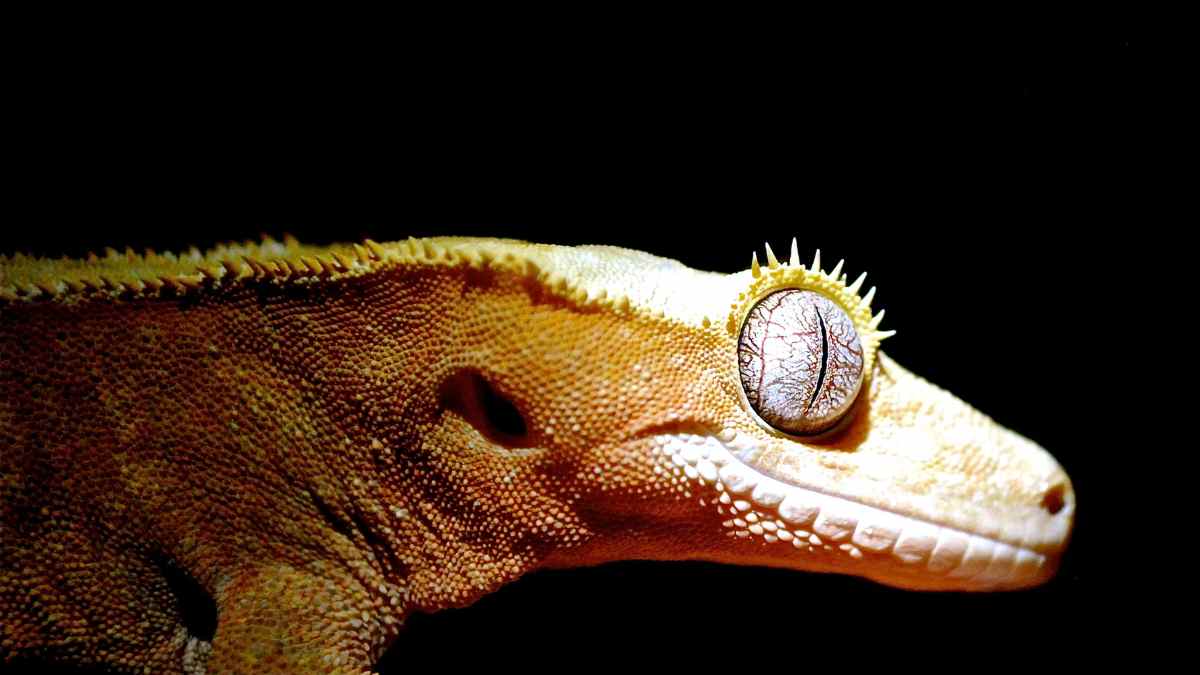Reptiles’ popularity as pets grows by the day, and rightly so.
These exotic pets are gorgeous and are great companions to their human owners. Besides, some lizards possess exquisite features that make them so enchanting.
Chief of those features, sometimes, is the bulging eyes that they have. Have you seen the frog-eyed gecko? It’s an absolute beauty to behold.
With their mesmerizing gaze and striking appearance, lizards with big eyes are one of nature’s most fascinating creations. From their unique adaptations to survive in harsh environments to their fascinating behavior and social dynamics, there is much to discover about these incredible reptiles.
This article lists lizards with big eyes that are excellent pet choices. So let’s take a look!
10 Lizards with Big Eyes That Make Great Pets
Frog-eyed gecko
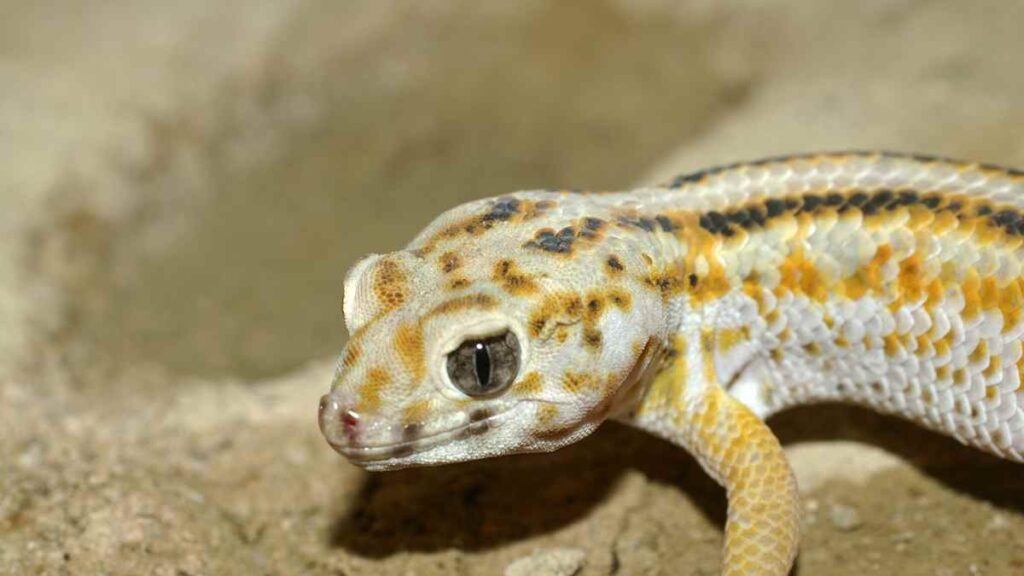
The frog-eyed gecko is unlike most species of geckos. First, they do not have sticky toe pads, meaning they are ground-dwelling lizards. Also, a frog-eyed gecko has scales on their bodies, and its name suggests that it is a lizard with big eyes.
Although frog-eyed geckos are gorgeous, there’s a reason you don’t find them in every pet store – caring for them is a challenging responsibility.
Several variables contribute to the life expectancy of a frog-eyed gecko. However, if you care for them properly, frog-eyed geckos can live from 12 to 20 years.
-

Beaded Dragon Fan Exclusive: ‘Original Hipster’ T-Shirt – Wear Your Unique Style with Pride – Unisex t-shirt
£13.00 – £20.50 Select options This product has multiple variants. The options may be chosen on the product page -

Chinese Water Dragon Aquatic Mastery Tee: Dive into Elegance with Our Exclusive Reptile Enthusiast Shirt – Unisex t-shirt
£13.00 – £20.50 Select options This product has multiple variants. The options may be chosen on the product page
Besides, you need not worry about large enclosures, as adult frog-eyed geckos are five to seven inches long. So a 10-gallon tank is enough for a pair of frog-eyed geckos.
Chameleons
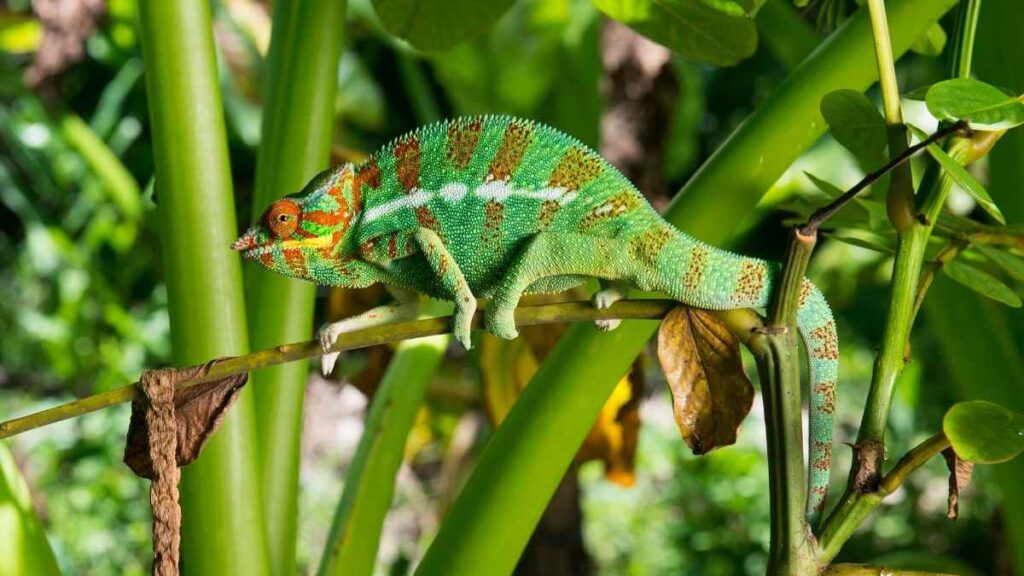
Besides the color-changing ability of chameleons, another outstanding feature is their globular eyes. You will enjoy watching each eye moving independently.
Species of chameleons are many; there are about 202. The size of chameleons varies from 0.5 inches to 27 inches, and their life expectancy in captivity is between three to ten years.
Chameleons are arboreal, making recreating their natural habitats difficult for pet owners.
To house a chameleon, you would need a 3x3x4 feet cage with plenty of foliage and branches (for climbing) and also make provision for hiding places.
You can feed gut-loaded crickets or roaches to your chameleons.
Crested gecko
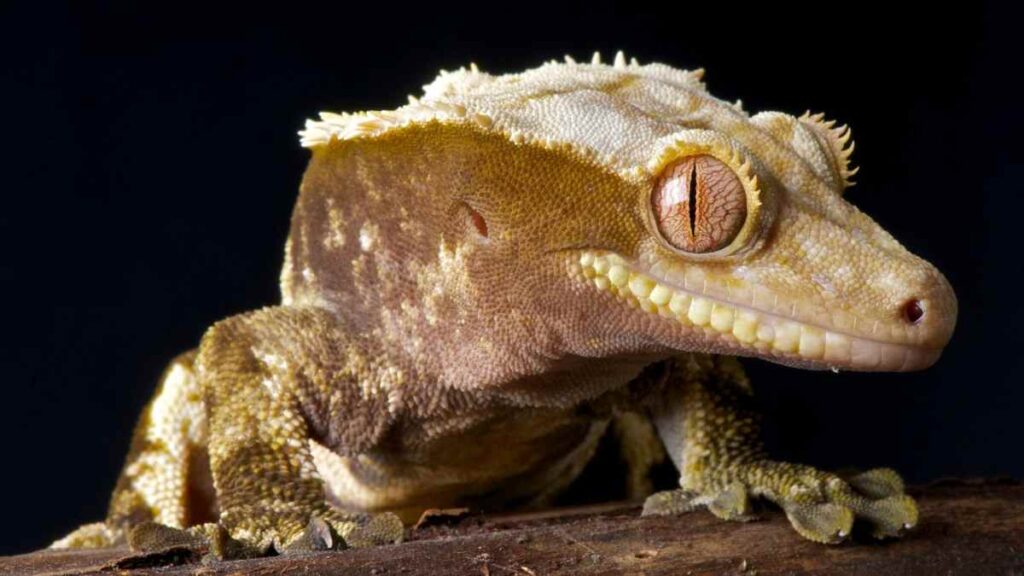
Another big-eyed pet lizard you would find fascinating is the crested gecko. Some years ago, many people thought crested geckos were extinct.
However, since their rediscovery in 1994, the crested geckos’ pet popularity has grown exponentially. As with many other lizard species, crested geckos come in several colors and markings (morphs).
Adult cresties are between seven to nine inches in length and have a life expectancy of ten to twenty years. In addition, crested geckos are docile, but it is best to be careful when handling them. Whenever they feel threatened, cresties can bite. Their bites are not very harmful, though.
An adult crestie will thrive in a tall 20-gallon tank. However, regarding enclosure size for pet lizards, you should note that the bigger the enclosure, the better.
Chahoua Gecko
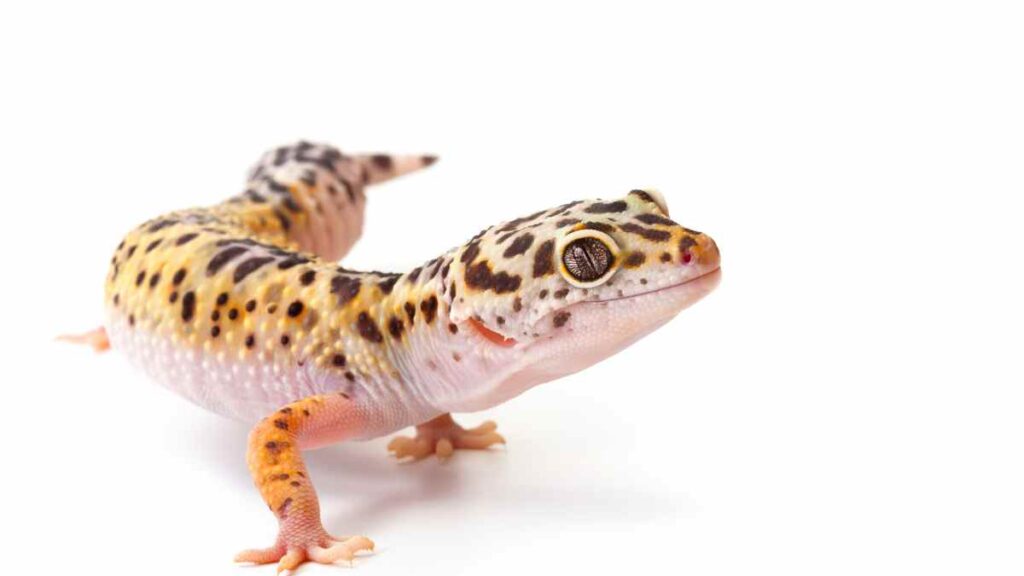
The next large-eyed pet lizard on this list is the Chahoua gecko. Chahoua geckos are nocturnal, meaning that they are most active at night. Moreso, Chahoua geckos are arboreal creatures and are omnivores. Therefore, they need both plant and animal-based food to get adequate nutrients.
You can feed them locusts, Dubia roaches, and crested gecko diets. Also, you should ‘dust’ the insects with calcium powder to balance the calcium-phosphorus ratio.
Since an adult Chahoua gecko’s length ranges from about ten to twelve inches, it is best to house them in a minimum enclosure size of 2 feet by 2 feet by 3 feet. Finally, Chahouas have a long life expectancy, between 15 to 20 years.
Madagascar Ground Gecko
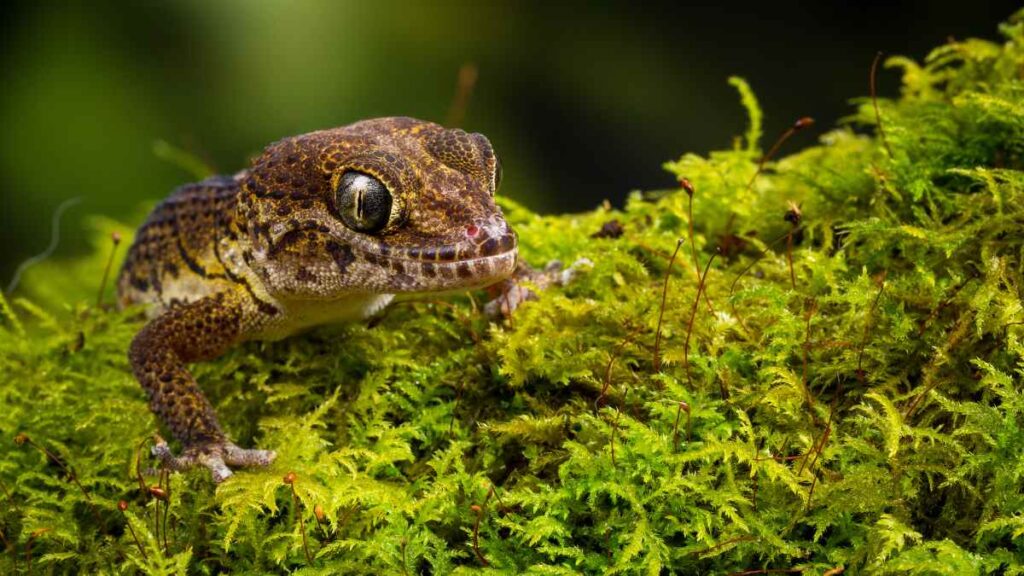
Also called Panther geckos, Madagascar day geckos are popular pet lizards thanks to their attractive appearance, easy care, and large eyes.
Although they are generally shy and prefer not to be handled, Madagascar ground geckos thrive well in captivity, especially when the owners care for them properly.
In addition, Panther geckos are nocturnal, which means they will be relatively inactive for most of the day. On average, a panther gecko’s life expectancy ranges from six to ten years.
Plus, the average size of a fully-grown Madagascar ground gecko is between four to six inches. Occasionally, some males reach eight inches, though. So a ten-gallon tank is enough to house one Madagascar ground gecko.
However, getting a bigger tank (probably 20 gallons) is better if you want to keep more than one in the same tank.
Note: Avoid keeping two or more males in the same enclosure, as they are too aggressive and territorial.
Flying gecko
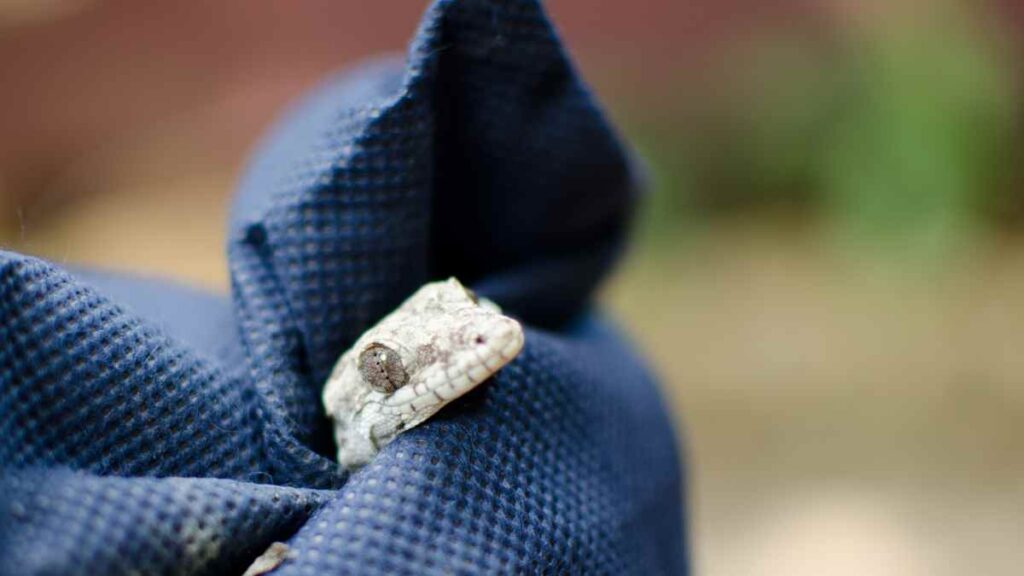
In contrast to what the name suggests, flying geckos do not fly. Instead, they glide from one branch to another. That said, they make great pets in captivity. However, if you want a pet to interact with and handle often, flying geckos may not be the best for you. This is because they are timid and do not tolerate handling.
They attempt to run off as soon as you try to handle them. A flying gecko can grow to be around four to eight inches. Hence, they do not require large enclosures.
However, considering that they are arboreal (i.e., they spend more time on trees than on land), you would need a tank that will allow climbing. The enclosure should be at least 1x1x2 feet or a 15 – 20-gallon tank.
Giant day gecko
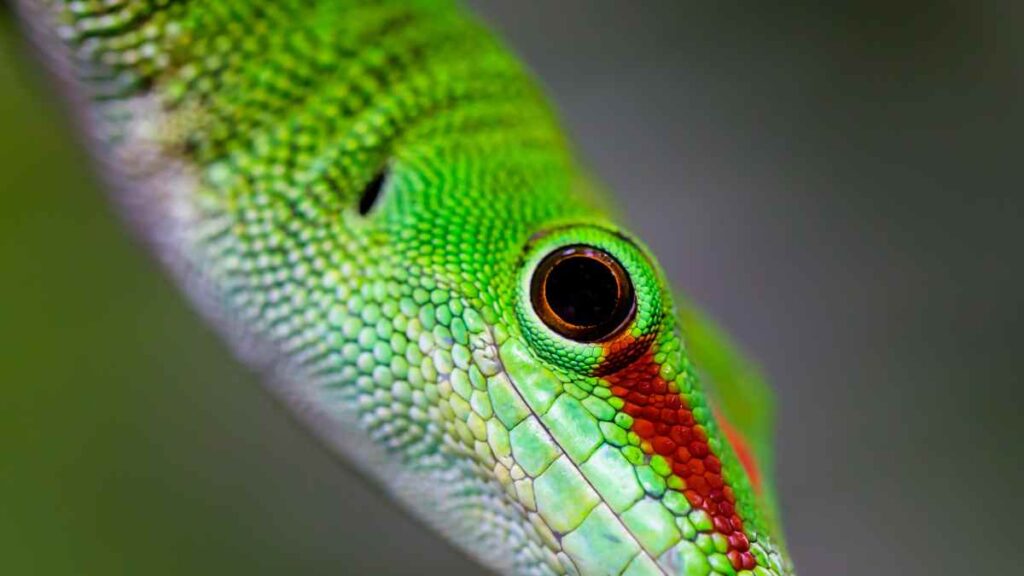
The giant day gecko is a relatively large species, the largest of the day geckos. Giant day geckos are not only big (compared to other day geckos) but also gorgeous, with bright green-colored skin and bright red marks on their heads and backs.
Also, the giant day gecko is one of the easiest to care for out of all the day geckos. A fully grown giant day gecko’s length is between ten to twelve inches. Generally, giant day geckos can live for around 15 years.
There have been some rare cases of giant day geckos living for almost twenty years, though.
Tokay gecko
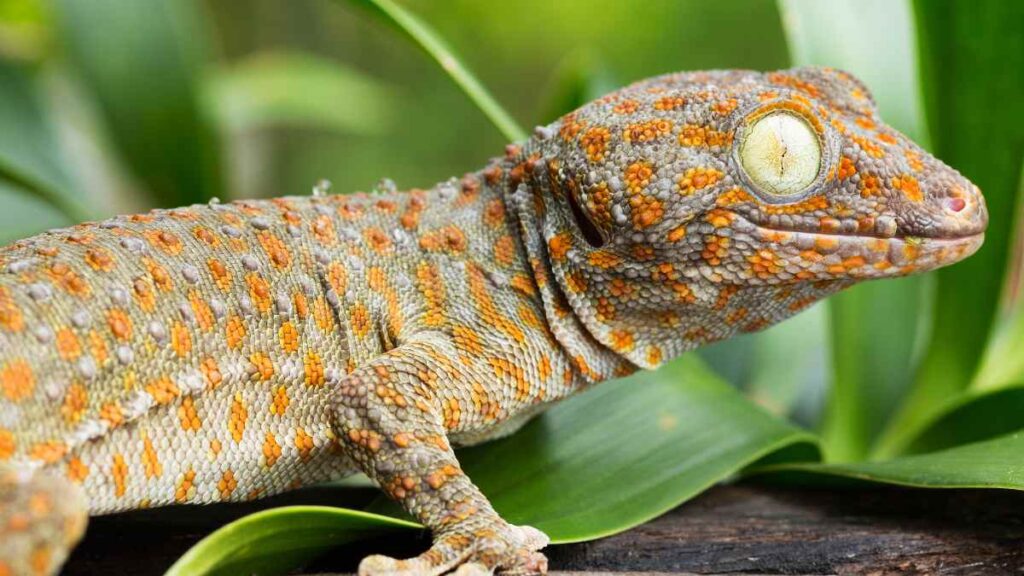
In contrast to other geckos, Tokays have relatively big heads and equally big eyes. They are famous for their brilliant colors and spots. Additionally, Tokay geckos are known to be aggressive and, consequently, not the best for beginners.
Tokay comes from their unique croaking sounds, saying, “To-kay!, To-kay!.” On average, you can expect tokay geckos to live for around ten years, and their size ranges from 12 to 15 inches when fully grown.
One last thing, the minimum enclosure size for housing an adult tokay gecko is a 20-gallon tank. How often you feed Tokays depends on their age and size. Hence, it is best to consult your veterinarian.
White-lined gecko
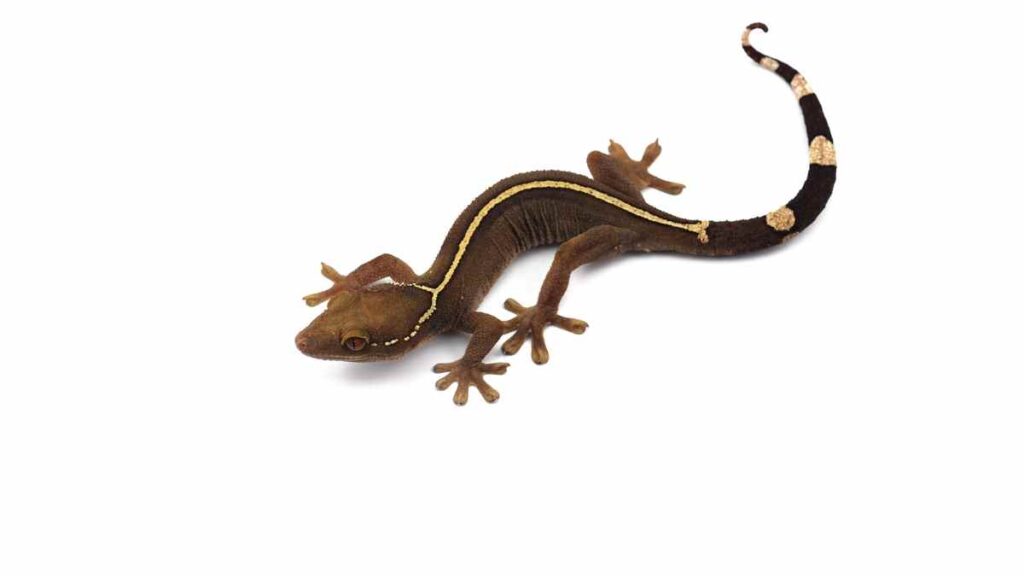
If you can meet their care needs (especially their housing requirements), white-lined geckos will make excellent pets for you. However, they do not tolerate frequent handling.
White-lined geckos are so-called because of the white stripe that begins from their bulging eyes, converges on their backs, and ends on their tails.
Since they are playful lizards, it would help to house white-lined geckos in enclosures of 20-gallon tanks or more. Also, white-lined geckos are nocturnal; thus, they do not require special UV lighting. Their diet is composed majorly of crickets. You can add other insects to it for variety, though.
Mediterranean House Gecko
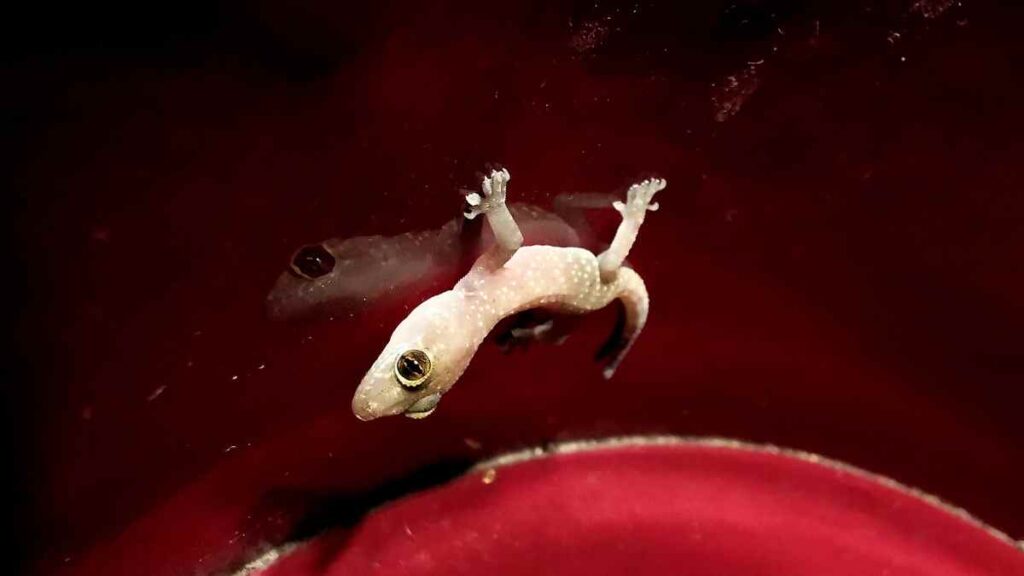
Mediterranean house geckos are hardy and make great pets for beginners. Moreso, they are easy to acquire. Since house geckos already live in home dwellings, keeping them as pets is relatively easy.
House geckos have sticky toe pads which enable them to climb almost any surface – they can even climb ceilings upside down! An adult house gecko’s length ranges from three to five inches, and they can live for more than five years in captivity.
How do the big eyes of these lizards benefit them in their natural habitats?
The article highlights the aesthetic appeal of lizards with big eyes but does not elaborate on the evolutionary advantages or specific functions these large eyes serve in their natural environments. Understanding how these adaptations aid in hunting, predator detection, or communication could provide deeper insights into the ecological roles of these lizards.
What are the breeding habits and requirements for these lizards?
While the post introduces various lizards suitable as pets due to their big eyes, it does not discuss their breeding habits or the feasibility of breeding them in captivity. Information on breeding requirements, mating behaviors, and potential challenges associated with captive breeding would be valuable for readers interested in these species as breeders or hobbyists.
The article lists lizards with big eyes that make suitable pets but lacks information on their social behaviors, particularly in relation to interactions with other species when kept in a shared habitat. Understanding how these lizards coexist or interact with other pets or species could be crucial for pet owners planning to keep them alongside other animals.
Conclusion
There you go. You can now pick any big-eyed lizards listed above to keep as pets. To further appreciate their beauty, you may check out the images or stock photos of most lizards with big eyes. However, it is a good idea to research them before bringing them into your home.
Also, purchasing your pets from a reputable breeder is best because captive-bred pet lizards tend to have fewer diseases/infections than wild-caught ones.
Finally, commit yourself to your pet’s care; it is gratifying.
Good luck!

